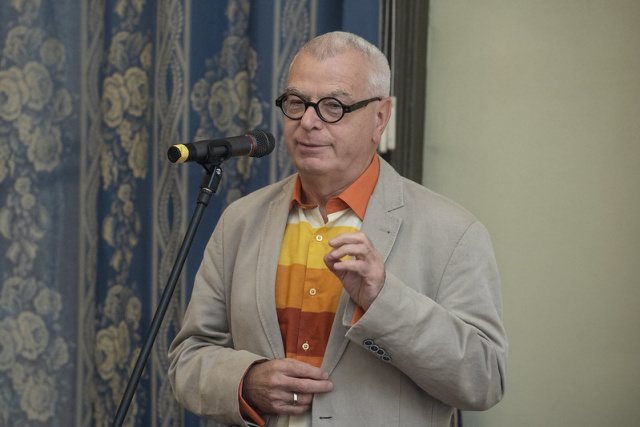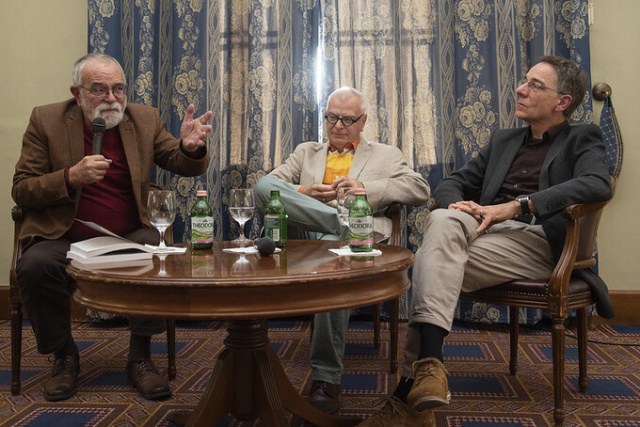His discoveries have deservedly become textbook data – the Hungarian edition of the book by academic György Buzsáki was presented at MTA’s Headquarters
The Brain from Inside Out is the title of the world-famous book by one of the standard-bearers of the Hungarian neuroscientific tradition; it has also been published in Hungarian. In the book, the author takes a critical look at contemporary brain research, questioning its theoretical framework.
“It takes a fundamentally new approach to understanding the functioning and self-organisation of the brain, the roots of which can be found in the early studies of the Szentágothai school, for example, in the formation of networks of spinal cord segments,” said Tamás Freund, President of the Hungarian Academy of Sciences, at the recent book launch at MTA, discussing the inner language of our brain. Buzsáki, together with Péter Somogyi, won the Brain Prize in 2011 for their discovery of the brain’s neural networks, which play a key role in memory processes.
 Tamás Freund Photo: mta.hu / Tamás Szigeti
Tamás Freund Photo: mta.hu / Tamás SzigetiFreund summarised the results of György Buzsáki’s research by saying that they show that it is not signals from the outside world that fill the blank pages of our brains with information to be remembered in the form of different population activity patterns – that is, spatially- and temporally-specific discharge sequences of neuronal groups – but rather that an infinite number of activity patterns generated by self-organising cortical networks are associated with representations from the outside world, thus giving meaning to spontaneously generated patterns.
Buzsáki said that science begins when someone says “this is interesting” regarding a phenomenon. It always takes an observant mind to see that something is wrong. And his main claim in his book is that the brain is a self-organising system with pre-existing connections and dynamics, whose main function is to generate actions and to examine and predict the consequences of those actions.
 György Buzsáki Photo: mta.hu / Tamás Szigeti
György Buzsáki Photo: mta.hu / Tamás SzigetiAs he writes in the foreword to the book, “This idea – what I call the inside-out strategy – departs from the framework that has dominated mainstream neuroscience to date, which is based on the assumption that the brain’s task is to perceive and represent the world, to process information, and to decide how to respond to the world along the outside-in pathway.”
György Buzsáki was born in 1949 in Kaposvár. He graduated as a doctor from the University of Pécs Medical School, where he obtained his doctorate in neuroscience under the supervision of Endre Grastyán. From the early 1980s he increasingly conducted research abroad; from 1986 he was an associate professor at the University of California, San Diego, and for twenty years he was a research fellow at Rutgers University, New Jersey, and a member of the professors’ council. He is currently the Biggs Distinguished Professor in the Departments of Neuroscience, Physiology and Neurology at the New York University School of Medicine. His main research interests include brain oscillations, “neural syntax”, memory consolidation, sleep and related pathologies.
 Csaba Pléh, György Buzsáki and László Acsády Photo: Tamás Szigeti
Csaba Pléh, György Buzsáki and László Acsády Photo: Tamás SzigetiSpeaking at the book launch, psychologist Csaba Pléh, a full member of the Hungarian Academy of Sciences, said that “reading this book forces me to look for new ways to understand the relationship between the nervous system and human mental processes and behaviour.”
László Acsády, neurobiologist and corresponding member of MTA, called Buzsáki’s book a “fundamental mirror” that shapes our perception of the human mind. “First, we protest. But then, reading the book, the author convinces us that the issues he raises cannot be swept off the table.”
